The Italian Larder
Search by alphabet:
A B C D E F G H I J K L M N O P R S T U V W Y Z
- OCTOPUS
- OLIVE
- OLIVE OIL
- ONION/ SPRING ONION / SCALLION / GREEN ONION
- OPPOSITELEAF RUSSIAN THISTLE
- ORANGE
- OREGANO
- OYSTER
Occhialone– See Fish: Sea bream
Occhiata – See Fish: Sea Bream, saddled
Octopus (Polpo / Piovra / Polpessa / Moscardino) (Octopus vulgaris)
Substitutes: cuttlefish and squid
Octopus is a grey to yellowish cephalopod with a rounded head resembling a sack with eight tentacles, each with two rows of suction cups. It lives along the coast throughout Italy and while it is fished year-round, it is best eaten in the winter.
Buy: Octopus should have bright skin, a pleasant smell, and have the skin, tentacles, and suction cups intact. Smaller octopus will be more tender and simpler to prepare. It is very difficult to distinguish between fresh octopus and octopus which has been frozen and thawed.
Types:
Atlantic white-spotted octopus (Polpessa / Polpetto / Fragoline di mare) (Octopus macropus) is smaller (its head grows up to 15 cm in length), has two tentacles which are longer than the rest, and is reddish in colour with white flecks.
Common octopus (Polpo / Piovra) (Octopus vulgaris) is the best tasting of the octopus but is more difficult to prepare as it needs to be tenderized. The head can grow up to 25 cm in length. It can grow up to 3 meters in total length but the best ones for eating are 50 cm in total length. They can weigh as little as 100 grams or as much as 25 kilos.
Curled octopus / Lesser octopus / Horned octopus (Moscardino / Polpo muschiàto / Polpo di Aldrovandi / Polpo di sabbia / Moscardino bianco / Sinisco) (Eledone cirrosa) only have one row of suction cups per tentacle. Its head grows up to 50 cm in length. It is normally braised and used in sauces but is less flavourful than the common octopus.
Store: Octopus is best used within a day of purchasing and can be kept sealed in the refrigerator. Octopus can be successfully frozen and will keep for three months if well sealed.
Prepare: Remove the beak and eyes. Turn the head inside out to remove the contents of the body. The ink can be reserved for use in making fresh pasta and pasta or risotto sauces but discard the rest. If the octopus weighs more than 100 grams, use a mallet or cutlet bat, to pound the tentacles and body until tender. Large octopus should also be skinned. Rub the octopus on a rough surface with circular movements to remove the sticky outer substance on the skin, rinsing from time to time (preferably with sea water) until the surface no longer feels slimy. Large octopus may need to be cooked for 2 hours or more, depending on the weight (calculate 1 hour per kilo of weight). Test if the octopus is done by piercing the octopus with the tip of a knife, if it goes in easily, then the octopus is cooked. Smaller octopus (which weigh up to 100 grams each) can be cooked in liquid for about 20 minutes. Do not overcook octopus or the meat will be bland, the skin and suction cups will detach, and it will look unappealing.
Eat: Octopus release liquid when cooked so do not need the addition of liquid when cooking (polpi cotti nella loro acqua, polpo affogato). Octopus can be baked, stewed (polpi in galera), boiled (polpo alla Luciana, polpo e patate), or pickled (polpo sott’aceto). Octopus pairs well with chillies, mint, parsley, marjoram, oregano, garlic, olive oil, lemon, onion, and tomato.
Olio di olive – See Olive oil
Olio santo – See Olive oil
Oliva – See Olive oil
Olive (Oliva / Uliva) (Olea europaea sativa)
Olives are the fruit of the olive tree whose firm flesh is rich in oil. Green olives are harvested at the end of summer and black olives (which may actually be purple or brown) are harvested in the winter when they are fully ripe. Once harvested, olives are processed in a variety of ways to make them palatable: soaking in water, fermenting, salting, preserving in oil, pickling, treatment with lime and caustic soda, dry curing, and flavouring with aromatics such as garlic, chillies, herbs, onion, lemon, or orange. There are 50 varieties of olives in Italy both for making olive oil and olives.
Buy: Olives can also come stuffed with many different fillings such as pepper or anchovy.
Most notable varieties:
Green:
Ascolana from the Marche.
Bella di Spagna is a Spanish variety grown in Puglia.
Cerignola / Bella di Puglia is a large green olive from Puglia.
Nocellaria del Belice DOP from Sicilia is harvested from September by hand. It also makes nice olive oil.
Sant’Agostino from Puglia.
Black:
Gaeta is a small, black olive from Campania.
Maiatica is from Basilicata and is also made into oil.
Ponentine is from Liguria and is small in size.
Taggiasca is from Liguria and is considered one of the finest olives.
Black olives can also be dried so appear shrivelled.
Store: Olives can be stored unopened at room temperature for one to two years. Once opened, store the olives in their liquid in a non-metal container for several weeks. If you want to keep them for longer, store them in olive oil in the refrigerator for up to two years.
Prepare: Olives should be removed from the liquid they are stored in before using. If the recipe requires them to be pitted, place them on a cutting board and press down with the palm of the hand and use your fingers to remove the pit.
Eat: Olives are served on their own as a starter (alivi cunzati, alivi ‘a puddastredda, olive conservate), stuffed (olive all’ascolana), or used in focaccia, bread (pan de molche, pane del pescatore), to top pizzas, in pasta sauces (alla puttanesca), in fish dishes, in rabbit dishes, and in chicken dishes.
Olive oil (Olio di Oliva) (Olea europaea sativa)
Olive oil is the most ubiquitous cooking fat throughout Italy although historically it was mainly used in salads as it was difficult to process until the hydraulic press was invented. It is particularly prized in the center and south of Italy and along the coastline in the north. It is produced in every region in Italy except Valle d’Aosta.
The olive tree has always held a historical significance since ancient times. The Greeks believed that Athena created the olive tree and used to award the victors of the Olympic games wreathes made of olive branches. The olive branch has historically also been the symbol of peace in Christianity. Olive oil is an extremely healthy oil to cook with as it increases HDL or good blood cholesterol and so reduces the incidence of heart disease and aids the circulatory system. The Italian diet is much lauded for its benefits to one’s health because of the prevalent use of olive oil. Olive oil is also prized for its flavour.
Olives for making olive oil are harvested from November to January before they are ripe as their oil content is the highest, about 30% of their weight. Olives at this stage are low in acid and have a nice mild flavour. About 100 kilos of olives produces 20 litres of oil. Once harvested, the olives must be processed within a week, although the best oil is processed within a day or two. The olives are rinsed, crushed, and pressed using a stone, wood, or metal press without the use of heat or chemicals. The first oil extracted from the pressing is known as the “first pressing” and is marketed as “virgin olive oil”. The subsequent pressings are considered inferior due to colour (too dark), taste (too acidic or too strongly flavoured), or smell (too strong) and are blended with virgin olive oil and sold as “olive oil”. Outside of Italy virgin olive oil is sold as “extra-virgin olive oil”. Inferior oil may also be treated with centrifugal and heat treatment but is lower quality. The International Olive Oil Council presides over the quality control on the manufacturing of olive oil. The most noted varieties of olives for making olive oil include: Coratina (Puglia), Frantoio (Puglia, Toscana, Umbria), Leccino (Toscana), Taggasca (Liguria), and Lavagnina (Liguria).
Buy: When buying olive oil you need to consider what you are using it for and then select accordingly as olive oil in many places is expensive. When buying olive oil, the main considerations are: the origin of the oil, the flavour, the aroma, the colour, and the grade. Buy olive oil within 6 months of the production date.
Factors to consider:
Origin, flavour and aroma: If you can, taste the oil to determine what qualities you prefer as olive oil varies in flavour and aroma from region to region. Olive oil from Liguria and Toscana are considered the best, particularly olive oil from Lucca. Ligurian olive oil is a pale golden colour with a delicate flavour. Tuscan olive oil is greener in colour with a fruity peppery flavour. Olive oil from Puglia is also very good and has an almond flavour to it. Current legislation requires producers to indicate the place of bottling on the label but not the place of production. Fine olive oils will also state the place of production.
Colour: Generally speaking, the better the olive oil, the deeper the green colour. Oil from Liguria being the notable exception. The general rule of thumb is that the more intense the olive flavour, and the less acid the oil.
Grade: “Extra-virgin olive oil” (vergine extra / extravergine) must have low acidity (less than 1%) although can vary in colour, flavour, and aroma. There is a big range of extra-virgin olive oils and one of the main guides is price if you cannot taste the oil. Artisanally produced extra-virgin olive oil is typically sold in smaller bottles. It is more expensive and should be used in dishes which are simply prepared with delicate flavours so that its flavour stands out. Fine olive oil should also not be heated as heat will alter the oil. Look for extra-virgin olive oil labelled “cold-pressed” or “first-pressing” as it will be lower in acidity and have a greater range of flavours. There are now also olive oils with DOP and DOC protection which are unique.
There are also industrially produced extra-virgin olive oil is by the big brands (Filippo Berio, Colavita, Carapelli, etc.) which are fine for cooking with heat and cost a lot less. They have a nice flavour and good colour. I typically have a bottle of both- the fine olive oil for salads and dressing simple dishes and a bottle of Colavita for cooking with.
“Virgin olive oil” (olio d’oliva vergine) is a grade of olive oil only available in Italy and has 2% acidity. It ranges in colour from golden yellow to green.
“Olive oil” (olio d’oliva) has been further processed and blended with other oils to remove any off flavours and harmful elements. It is paler in colourful and is less flavourful than extra-virgin olive oil as a result. It can be used in other preparations, particularly if a large quantity of heated oil will be required such as in deep-frying. Many sources say deep-frying with olive oil is unwise as it cannot tolerate high frying temperatures but my Ligurian friends assure me they only deep-fry with olive oil.
Store: Olive oil should be stored in a light proof container, sealed from the air in a dry, cool place. It should be consumed between 6 months and 12 months after it was produced but can be held up to 18 months after production.
Prepare: No preparation is needed for olive oil.
Eat: Olive oil is ubiquitous in its use. It is used to dress breads (focaccia, crostini, bruschetta), dip vegetables (pinzimonio), flavour cakes and biscuits, dress salads, soups, and cooked fish, meat, and vegetables. It is also the base for cooking vegetables, meat, and fish. Olive oil can also be flavoured with chillies and used to dress pasta, pizza, salad, and vegetables (olio santo).
Ombrina– See Fish: Shi drum
Onion / Spring onion / Scallion / Green onion (Cipolla) (Allium cepa)
Substitute: shallot
Equivalent: medium onion = 120-180 grams = 1 cup chopped or sliced = ½ cup cooked onion = 1 serving
Onion is the bulb of the onion plant. The bulb is built in concentric layers which come to a peak at the top. Onions are harvested at different stages in their maturity. Before the bulb has formed or has just started to form, the onions are called spring onions. Once a small bulb has formed but before it has grown large, the baby onions are called cipolline. Full grown, mature onions are harvested from May to September and can be dried and sold year-round. They are protected by a paper-like skin and can be yellow, white, or red in colour. They can be round, elongated, or flattened. The size also varies greatly from a few grams to two kilos as there are many varieties. The red varieties are the sweetest. Onions are said to aid digestion and be diuretic. They are rich in potassium and contain calcium and vitamins A, C, B, B1, B2, and PP.
Buy: Select the onion size for how much onion will be needed as they do not keep well once cut. Onions should smell fresh. Freshly harvested onions will appear shiny and moist and will not yet have developed a paper-like outer skin. Dried, mature onions will be dry, firm and compact with no soft spots or black powder forming on them. There should be no moisture on the top or root. The stem should not appear woody. There should also be no green sprouting from them as this indicates the core has suffered. White onions should be shiny whereas the other onions should have a dry skin that crumbles easily. Spring onions should be unblemished and dry.
Types:
Spring onions:
Spring onion / Green onion / Scallion (Cipollotto / Cipolle novelle) is an immature red or white onion which has been harvested before the bulb has formed or only just begun to form. It is mild and delicate and can be eaten raw. The traditional season for the spring onion was spring through summer. It is used in salads, stuffings, and in omelettes.
Baby onion / Pearl onion / Cipolline (Cipolline / Cipollette) is an immature red or white onion which has been harvested when the bulb has begun to form but is still small. The most common variety of baby onion is Borettana. The best baby white onions (cipolline) are the Brianzola variety from Lombardia. Also very good are the varieties: Precoce di Barletta, Giallognola di Como, and the Borettana.
Mature onions: They are harvested in June and July for consumption during the summer at the end of the summer and autumn to be dried for use all year-round.
Red onion has a red skin and layers. It is sweet and can be used interchangeably with Spanish onions. It is used raw or cooked. The most popular variety is the sweet Rossa di Tropea PGI.
Spanish onion is a larger, slightly flatter brown skinned onion. It is milder than yellow onions. The most popular variety is Ramata di Milano. A notable variety is the Dorata di Parma.
Yellow onion has a golden brown outer skin. This is the strongest flavoured of the globe onions and is a good all-purpose onion.
White onion is sweeter than yellow or pink onions. The most popular variety is the Bianca di maggia.
Store: Spring onions can be kept wrapped in plastic in the drawer of the refrigerator for 2-3 days. Mature onions can be kept for 10 days or more if they are stored in a cool (about 10˚C), dry, dark place with air that circulates. Do not store in the refrigerator or together with potatoes as they become mouldy. After a mature onion has been cut, keep it wrapped in the refrigerator and use it within 2 days. Mature onions which have begun to sprout green leaves are generally no longer usable.
Prepare: To prepare spring onions, rinse under cold water, remove the root end and chop the entire spring onion. The green part can also be used.
To prepare baby onions, parboil them first to more easily remove the skin, top and root. They are typically used whole.
To prepare mature onions, if the onion has a green sprout, cut it in half first to determine if the inside has turned soft (and therefore is unusable). If not then remove the shoot and discard and use the rest of the onion. Cut onions can make eyes tear up. To prevent this, leave the onion in the refrigerator for 1 hour before chopping it or simply breathe out of your mouth while chopping. To cut an onion, remove the tip with a knife, keeping the root end in tact. Remove the papery outer layer. To slice rounds, slice down parallel to the cut end. To make slices or dice, place the cut end down on the cutting board and slice the onion in half down through the root. To make slices, place the newly cut end on the cutting board and cut off the root end. Then place the knife parallel to the uncut side and working from one uncut end to the other, slice thinly. To dice the onion, place the newly cut end down and keeping the root attached, make slices from the root towards the cut end across the onion, then turn the onion 90˚ and start dicing the onion until reaching the root. Then prepare according to the recipe but never burn onions as their flavour turns bitter.
Eat: Onion is used as a vegetable and as a flavouring agent. Onions can be eaten raw in salads, in pinzimonio, with beans, with preserved tuna, or with cold cuts. They can be roasted (cipolle al forno), fried (cipolle fritte), boiled, sautéed, and grilled. Onion, along with carrot and celery, form the base of (called soffrito or battuto) many sauces and soups. Onions can be roasted stuffed with meat and served as a starter or side dish (cipolle ripiene, cipolle ripiene con tonno), are used in soups (cipollata, carabaccia), salads, in bread (fitascetta) on top of focaccia, on pizza (pizzalandrea, pizza con cipolle), sauces (salsa di cipolle), in savory tarts, in meat and fish dishes, in omelettes (frittata spagnola), pies, in side dishes (contorni), roasted whole. As a side dish they are served with liver, salt cod (baccalà fritto alla Milanese), and braised meats (Genovese, pollo alla cacciatora Emiliano). The baby globe onions (cipolline) are pickled (cipolline sott’aceto), served in sweet and sour sauce (cipolline in agrodolce), stewed or glazed (cipolline glassate) and served with roast or braised meats, or preserved in vinegar (cipolle sott’aceto) or olive oil. They pair well with mushrooms, roasted meat, particularly veal, butter, cream, olive oil, rosemary, thyme, sage, bay leave, cloves, cinnamon, chilli, vinegar, sugar, honey, cheese, preserved tuna, beans, and potatoes.
Oppositeleaf Russian Thistle (Agretti / Barba di Frate / Barba di Becco) (Lepidium sativum)

Buy: Look for unwilted, dry, bright green strands. It is typically tied in bunches with the stem still attached. Ensure there are no signs of rotting.
Store: Store in the refrigerator in a sealed container for 3 to 4 days.
Prepare: Wash in cold water and cut off the root end.
Eat: Agretti can be eaten raw, mixed into salads, or boiled quickly in salted water and dressed. Typical dressings include salt, pepper, olive oil, and vinegar or butter. I like mine with olive oil, anchovy, and garlic. It can also be used in risotto.
Orange (Arancia) (Citrus sinensis, Citrus aurantium)
Orange is a citrus fruit which is in season year-round. It was first introduced to Italy by the Arabs. There is a prized type of orange from Sicilia called the blood orange (arancia rossa) as it has red mottling on the orange skin and the flesh is streaked red and orange.
Buy: Buy organic oranges when possible that are firm but not hard and have smooth skin for their variety. They should be free from soft spots or mould. Oranges should be heavy for their size, although some varieties of oranges have thick skins so factor this in. The colour is not a factor in determining the quality of the flesh as it deeps depending on the weather.
Types:
Bitter orange / Sour orange / Seville orange / Bigarade orange (Arancia amara / Arancia di Siviglia) (Citrus aurantium) are sour and bitter and cannot be eaten fresh. The flowers are used for making perfume and orange-flower water. The fruit is used for making marmalade and for cooking duck. The oil is used to make liqueurs.
Bergamot (Citrus bergamia) is a yellow orange with very sour juice and highly aromatic skin grown which is grown in Calabria. It is in season in the winter. Its oil is used to make perfumes and flavour Earl Grey tea. The peel is also candied.
Common orange / Juicing orange (Arancia dolce) (Citrus sinensis) is good for juicing and eating. It is widely grown in southern Italy, particularly Calabria and Sicilia.
Blood orange (Arancia rossa) has a thin skin. It is good eaten fresh and has a tart, rich flavour. Varieties include:
Moro is medium sized, and has very red skin and is often exported. It is in season from November to April but the early season Moro is tart and is best mid-season in January or February. A late season Moro can take on a musky flavour and may turn purple.
Sanguinello is in season from January to June.
Tarocco has the best flavour of the blood oranges, although is less consistent, and is larger. Tarocco is seedless and the flesh only turns red when it is mature. It has a pale red tinge to the skin and the flesh is not as bright. It is in season from December to April.
Calabrese / Ovale is oval in shape, medium-large in size, and is seedless. It is in season from April to July.
Navel orange is good eaten fresh or juiced, but must be consumed fresh or it turns bitter. The navel orange has a very good flavour. It has thick skin and a belly button which is actually a small secondary fruit growing within the fruit. Considering the thickness of its skin, if it is sold by weight, it may be relatively less expensive to buy Valencia oranges, particularly for juicing. It is in season from November through March.
Valencia is a Spanish orange that is the most common orange in the world. It has thin skin and large, very juicy fruit, excellent flavour, and few seeds. The Valencia is heavy for its size and is good for juicing. It is in season from April to May. The skin can sometimes have green tinges but this has no indication of the quality of the flesh.
Store: Oranges can be kept at room temperature for a week or in the refrigerator for a month (if stored where air circulates).
Prepare: To zest an orange, rinse the orange and dry it. Use a zester, rasp grater, or microplane to remove the thin orange coloured part of the zest without grating any of the white, bitter pith. Smooth-skinned varieties are best for zest. To skin an orange, cut off the blossom and stem ends. Set one of the cut ends on the cutting board and use a paring knife to make slices down from the top to the board, slicing off strips and working your way around the orange. Cut off any remaining white pith. Slice into rounds or to segment, hold in your hand and slice along the membranes to release the segments.
Eat: Oranges are eaten as they are or used in salads (insalata di arance, olive all’arancia), granite, sorbet (sorbetto di arancia), gelato, cakes (torta all’arancia), drinks (aranciata), liqueurs, marmalade (marmellata di arance), with duck (anatra all’arancia), and with pigeon (palomba alla todina). The rind is also dried or candied (zest di Carignano) and added to desserts. The fresh zest is also added to cakes, pastry, biscuits, and cured meats (salsiccia di Monte S Biagio, ventricina di Guilmi, sfarricciato). The orange blossoms are distilled into orange flower water used to flavour desserts. It pairs well with strawberries.
Orata– See Fish: Gilthead bream
Orecchiette – See Pasta: Dried Pasta
Orecchione, fungo – See Mushroom: Oyster
Oregano / Greek oregano (Origano) (Origanum vulgare, Origanum heracleoticum)
Substitute: marjoram
Regional names: cornabusa, erba acciuga, rigano
Oregano is a herb which grows all over Italy, but its flavour is particularly characteristic of southern Italian cooking. In the spring and summer, it has little pink flowers. In the summer, the young leaves are harvested for cooking.
Buy: Oregano can be fresh or dry and is one of the few herbs whose flavour is preserved when dried. Fresh oregano from southern Italy is said to be the best quality. There is also Mexican oregano which has a more aggressive flavour than the European varieties.
Types:
Oregano (Origanum vulgare) is grown in central and northern Italy but it is less fragrant so less prized.
Greek Oregano (Origanum heracleoticum) is grown in southern Italy and sold in dried bunches in markets. It is prized but difficult to find fresh.
Store: Store dried oregano in a dry, dark place.
Prepare: Dried oregano can be toasted gently in a frying pan to bring out its flavour. Fresh oregano can be rinsed under cold water, dried, leaves removed, and used in cooking.
Eat: Oregano is used on pizza (pizza napoletana, rianata, sardinaira), to dress salads (caprese), to flavour cured pork products (U suppessato, budello origanato) and with pickles. It is also used in liqueurs. Oregano pairs well with lemon, fish, particularly anchovies and swordfish, and most vegetables but particularly tomato and aubergine.
Origano – See Oregano
Ortica – See Nettle
Ostrica– See Oyster
Ovale – See Orange
Ovolo, fungo – See Mushroom: Caesar’s mushroom
Oyster (Ostrica) (Ostrea edulis, Crassostrea angulate, Crassostrea gigas)
Equivalents: 6 oysters = 1 starter serving
Oysters are bivalves with irregular shaped shells which live on rocky sea beds. They have been enjoyed since Roman times. Traditional areas for oysters are in the gulf of La Spezia (Liguria), the gulf of Taranto (Puglia), the Venice lagoon (Veneto), and the central and northern Adriatic Sea.
Buy: Buy only very fresh oysters. All the shells should be firmly shut with no cracks in the shells. They can be farmed or wild. Most oysters sold in Italy are from France. Check the sell buy date on the label which should also indicate the provenance and certify depuration for 24 hours in controlled plants. Oysters vary in size and are numbered from 0 to 5 with 0 being the largest. Sizing varies by country so a British 5 will be larger than a French 5. An average sized oyster is about 10 cm in length. Wild oysters vary widely by season and are best when the ocean is coldest. Only buy wild oysters from the end of October through February. During the summer, wild oysters breed and the flesh can be undesirably milky, fat, and soft. Farmed oyster can be purchased anytime and are sold in 1 to 3 kilo wooden crates labeled with the date of packing. There are three types of oysters in Europe:
Types:
贝隆生蚝Belon / European / Round / Native / Flat (Ostrica piatta /Adriatica / Tarantina) (Ostrea edulis) has a flat, rounded shell and a delicate flavour. This type is the most prized species, although are relatively rare. The finest in Italy are found in Tarantino, Puglia. They are normally between 7 to 10 cm in length but can grow up to 15 cm (labelled “000”). Outside of the classification are the enormous “Pieds de cheval” which are reknowned for their particular hazelnut flavour, low salinity and iodine They are farmed in the northern Adriatic Sea and the Venetian lagoon in Veneto and are the most common type of oyster in Italy.
岩蚝Rock oyster / Pacific oyster / Japanese oyster / Concave /Gigas (Ostrica giapponese / Ostrica concave) (Crassostrea gigas) has an elongated, concave shell which holds more water. The texture is coarse and the flavour is of the sea. The flavour of the meat is good but still slightly inferior to the flavour of the Belon. They are often cooked rather than eaten raw. They are intensively farmed. There are some oysters which are finished in shallow clay ponds which give them a superior texture and flavour. The label Ordinaire means they have not been finished in these ponds. Claire means they were finished for less than a month, Fines de claire means they were finished for more than a month and fines de claire speciales means they were finished even longer and covered with a green algae that imparts a particular flavour.
葡萄牙生蚝Portuguese oyster (Ostrica lunga / Ostrica portughese) (Crassostrea angulata) has an elongated, convex shell. These are less fine than the Belon and the Rock oyster.
Store: Do not store oysters; eat them upon purchasing. If they must be stored, keep ithem in the fridge in their crate with the concave part down and covered so that they do not open and lose their water.
Prepare: Discard any shells which are open or cracked. Using a dishcloth or a knit, metal or garden glove. to cover your hand, hold the oyster in one hand and use an oyster knife in the other hand. Be very careful while opening the oyster as it is very easy to cut yourself. Place the tip of the oyster knife in the hinge and turn the blade to force the shell open. Discard the flattened top shell. Use the oyster knife to separate the flesh from the other half of the shell, retaining the meat in shell if they are to be served raw. Tip out the liquid with the shards of shell using the knife to help remove them and discard the liquid. Don’t worry about leaving the oyster dry, more liquid will come out. Place the raw oyster on a platter filled with shaved ice or rock salt. Discard any oysters which have not opened during cooking.
Eat: If an oyster tastes bad, spit it out. Oysters can be eaten raw or cooked. Raw oysters are served on the half shell on a bed of crushed ice and the liquid is prized for its flavour. They are normally eaten with a small fork, a sprinkling of black pepper or lemon juice, and accompanied by whole wheat or white bread and butter. Oysters are eaten with dry white sparkling wine like Champagne blanc de blanc or a dry, herbaceous white wine. They can also be gratinéed and baked (ostriche alla tarantina), boiled, fried, steamed or baked in sealed in parchment paper with vegetables.
Oyster mushroom – See Mushroom: Oyster




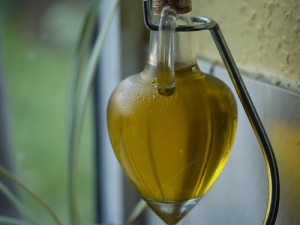




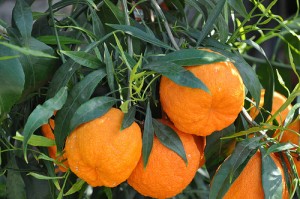
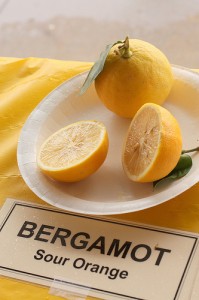

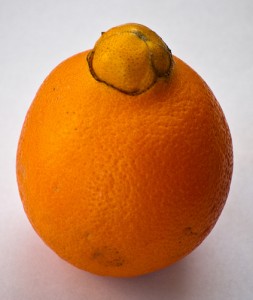

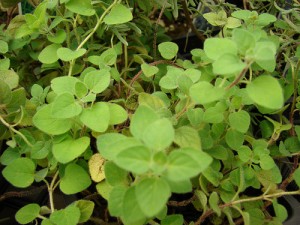






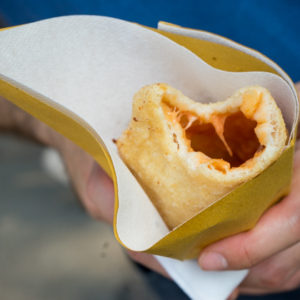

Leave a Reply